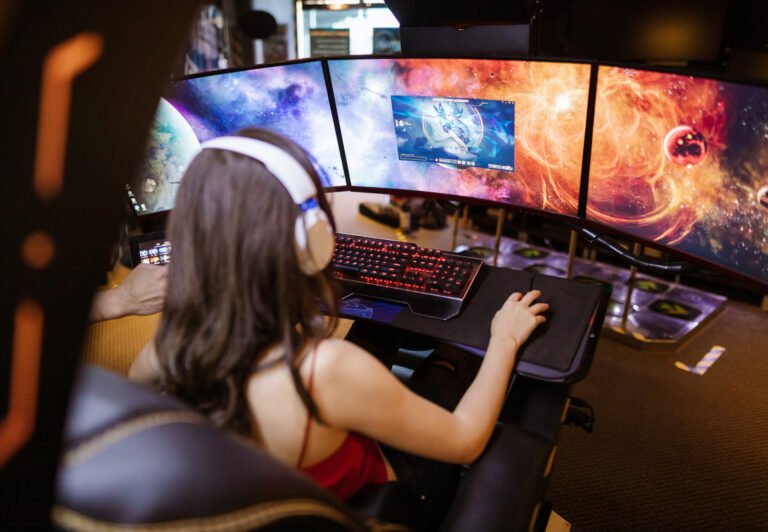From Concept to Reality: Learn How to Develop a Game in 6 Simple Steps
Layaba Noor
September 21, 2023. 4 minute Read
"
Want to Learn How to Develop a Game? Well, you’ve come to the right place.
- Table of Content
- Learn How to Develop a Game in 6 Simple Steps
- Final Thoughts
From concept to coding, design to deployment, this article is your compass through the entire process of game development, transforming it from a complex art to an exciting journey.
Learn How to Develop a Game in 6 Simple Steps
Embarking on the game development journey is like navigating through a virtual labyrinth, where creativity merges with technical prowess.
While it may seem daunting, we’re here to demystify the process and break it into six manageable parts.
These 6 Super Easy Steps Will Simplify the Game Developing Process for You.
1. Idea Generation: Where Imagination Takes Flight
At the heart of any game lies a unique concept.
Game creators often use various techniques to spark inspiration, for
- Brainstorming sessions,
- Market research, and
- To generate ideas related to game.
These tools provide a fertile ground for fresh, innovative concepts that can later be refined and molded into a compelling game narrative.
2. Game Designing: Craft the Virtual Universe
Once a concept is established, the real work begins.
Game designing involves defining:
- The game's mechanics,
- Characters,
- Environments, and
- Overall gameplay experience.
Creators meticulously sketch out storyboards design levels, and create character profiles, ensuring that every aspect aligns with the overarching vision.
3. Game Making and Testing: Breathe Life into Codes
With the blueprint in hand, it’s time to dive into the world of coding.
Game makers select an appropriate game engine – a platform that provides the necessary tools and libraries to develop the game.
Popular engines like Unity and Unreal Engine are favored for their versatility and robust capabilities.
As lines of code bring the game to life, rigorous testing is crucial.
Creators spend hours debugging, fine-tuning mechanics, and playtesting to iron out any glitches or imbalances that might detract from the player’s experience.
4. Game Engine: Power Your Virtual Universe
The choice of a game engine significantly impacts the development process.
Each engine offers unique features, rendering capabilities, and development environments.
When selecting an engine that aligns with your vision, Creators weigh factors such as,
- Platform compatibility,
- Ease of use, and
- Community support.
5. Polishing and Final Touches: Elevate the Player Experience
The last phase involves adding the finishing touches that elevate the player’s experience.
Creators optimize performance, refine graphics and audio, and ensure seamless user interface navigation.
These subtle details can significantly affect how players perceive and engage with the game.
6. Game Publishing: Share Your Masterpiece with the World
Once the game is polished, it’s time to introduce it to the world.
Creators have the option to self-publish or collaborate with established publishers.
Self-publishing offers creative freedom but demands a robust marketing strategy while partnering with a publisher brings in their expertise and established audience.
It’s crucial to weigh your options wisely and go for what best suits your level of expertise and experience.
Final Thoughts
In a nutshell!
Developing a game is a dynamic, multi-faceted process that demands a fusion of creativity, technical expertise, and meticulous planning.
From inception to execution, creators breathe life into virtual worlds, offering players an immersive experience that transcends the boundaries of reality.
So, whether you’re a seasoned developer or a budding creator, remember that every game begins as an idea waiting to be transformed into a masterpiece.
Subscribe to new post
The One Liner
Useful Links
Order Related Queries
Useful Links
Order Related Queries






